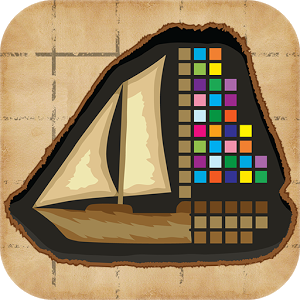

A fun and challenging puzzle with a nice interface and easy controls. You will discover a hidden picture by filling in cells on a game field. With a large number of puzzles, you won’t let you get bored!
The first levels have hints for beginners, while more experienced nonogram players can find more challenging, larger puzzles. It’s easy to learn how to play the game, but you will need logical and analytical skills.
"Simple and awesome! It's the game I looking for, it's lightweight, simple, addicting."
"Love this game. Great controls. Keeps me from having to buy so many puzzle magazines and books...and pens!"
"Awesome game! I love this game...some of the puzzles are hard to figure out..but that makes it a challenge!"
"Very addictive. I play every chance I get."
"Great! If you want to challenge your self, then this is the app for you!! A very good way to keep your brain busy!"
Features:
- More than 300 puzzles (20 free)
- 8 levels and sizes, ranging from 5С…5 to 60С…60
- Easy controls
- Ancient Japanese design
- Hints
- Syncing between devices
In japanese nonograms the numbers are a form of discrete tomography that measures how many unbroken lines of filled-in squares there are in any given row or column. For example, a clue of "4 8 3" would mean there are sets of four, eight, and three filled squares, in that order, with at least one blank square between successive groups.
These nonograms are often black and white, describing a binary image, but they can also be colored. If colored, the number clues are also colored to indicate the color of the squares. In such crossword two differently colored numbers may have a space in between them. For example, a black four followed by a red two could mean four black boxes, some empty spaces, and two red boxes, or it could simply mean four black boxes followed immediately by two red ones.
Japanese nonograms have no theoretical limits on size, and are not restricted to square layouts.
Japanese crosswords, also known as nonogram, hanjie, griddlers, picross, crucipixel, edel, figurepic, grafilogika, japanilaiset, karala!, kare, logicolor, logigraphe, oekaki, oekaki-mate, pic-a-pix, pikurosu, ristikot, shchor, square, tsunami, uftor or paint by numbers crosswords, started appearing in Japanese puzzle magazines. Non Ishida published three picture grid crosswords in 1988 in Japan under the name of "Window Art Puzzles". Subsequently in 1990, James Dalgety in the UK invented the name Nonograms after Non Ishida, and The Sunday Telegraph started publishing them on a weekly basis.







